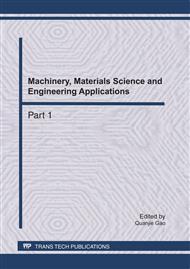p.185
p.191
p.196
p.204
p.209
p.216
p.222
p.227
p.233
Experimental Study of Critical Quality in Vertical Narrow Annular Channels
Abstract:
Flow boiling heat transfer in vertical narrow annular channels with dual tube heating has been experimentally investigated using distilled water as the working fluid. The experiments were made on two types of test section within the experimental range: heat flux, 40-210 kW/m2; mass flux, 45-180 kg/m2s; system pressure, 2-3.5MPa; gap size, 2mm and 3mm. The intention of this paper is to experimentally survey the flow boiling dryout mechanism of liquid film on the tube wall of vertical narrow annular channels with heated length of 1300mm. The values of dryout temperature, while the heating rate reaches critical heat flux, could be measured in the experiments. And the values of the critical quality xcr were calculated by thermodynamic equilibrium. The main factors which have influence on critical quality, such as mass flux, dimension of the narrow channel, heat flux and water inlet temperature were analyzed based on the experimental data. The empirical correlation which used to calculate critical quality in vertical narrow annular channels in similar conditions was given here. The calculation results of this correlation were compared with experimental data and agreed well with it while the deviation is less than 15%.
Info:
Periodical:
Pages:
209-215
Citation:
Online since:
April 2011
Authors:
Keywords:
Price:
Сopyright:
© 2011 Trans Tech Publications Ltd. All Rights Reserved
Share:
Citation:


